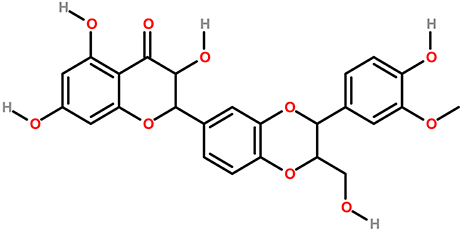
95% of researchers rate our articles as excellent or good
Learn more about the work of our research integrity team to safeguard the quality of each article we publish.
Find out more
CORRECTION article
Front. Pharmacol. , 06 October 2017
Sec. Ethnopharmacology
Volume 8 - 2017 | https://doi.org/10.3389/fphar.2017.00690
This article is part of the Research Topic Phytochemicals in Preventing and Managing Metabolic Syndrome View all 54 articles
This article is a correction to:
Ethnopharmacological Approaches for Therapy of Jaundice: Part II. Highly Used Plant Species from Acanthaceae, Euphorbiaceae, Asteraceae, Combretaceae, and Fabaceae Families
 Devesh Tewari1†
Devesh Tewari1† Andrei Mocan2,3†
Andrei Mocan2,3† Emil D. Parvanov4
Emil D. Parvanov4 Archana N. Sah1
Archana N. Sah1 Seyed M. Nabavi5
Seyed M. Nabavi5 Lukasz Huminiecki6
Lukasz Huminiecki6 Zheng Feei Ma7,8
Zheng Feei Ma7,8 Yeong Yeh Lee7
Yeong Yeh Lee7 Jarosław O. Horbańczuk6
Jarosław O. Horbańczuk6 Atanas G. Atanasov6,9,10*
Atanas G. Atanasov6,9,10*by Tewari, D., Mocan, A., Parvanov, E. D., Sah, A. N., Nabavi, S. M., Huminiecki, L., et al. (2017). Front. Pharmacol. 8:519. doi: 10.3389/fphar.2017.00519
In the original article, there was a mistake in the legend for Figure 4 as published (the spelling of isosilibin was incorrect). The correct legend appears below.
In the original article, there was a mistake in Figure 4 as published (CH3 group was missing in the Silybin structure). The corrected Figure 4 appears below.

Figure 4. The chemical structures of phytoconstituents of Milk thistle (A) Silybin and (B) Isosilybin.
The authors apologize for these errors and state that this does not change the scientific conclusions of the article in any way.
The authors declare that the research was conducted in the absence of any commercial or financial relationships that could be construed as a potential conflict of interest.
The handling Editor declared a past co-authorship with the author SN.
Keywords: jaundice, bilirubin, oxidative stress, traditional use, phytoconstituents, serum enzymes, alkaline phosphatase
Citation: Tewari D, Mocan A, Parvanov ED, Sah AN, Nabavi SM, Huminiecki L, Ma ZF, Lee YY, Horbańczuk JO and Atanasov AG (2017) Corrigendum: Ethnopharmacological Approaches for Therapy of Jaundice: Part II. Highly Used Plant Species from Acanthaceae, Euphorbiaceae, Asteraceae, Combretaceae, and Fabaceae Families. Front. Pharmacol. 8:690. doi: 10.3389/fphar.2017.00690
Received: 19 August 2017; Accepted: 15 September 2017;
Published: 06 October 2017.
Edited and reviewed by: Jianbo Xiao, University of Macau, China
Copyright © 2017 Tewari, Mocan, Parvanov, Sah, Nabavi, Huminiecki, Ma, Lee, Horbańczuk and Atanasov. This is an open-access article distributed under the terms of the Creative Commons Attribution License (CC BY). The use, distribution or reproduction in other forums is permitted, provided the original author(s) or licensor are credited and that the original publication in this journal is cited, in accordance with accepted academic practice. No use, distribution or reproduction is permitted which does not comply with these terms.
*Correspondence: Atanas G. Atanasov, YS5hdGFuYXNvdi5tYWlsYm94QGdtYWlsLmNvbQ==
†These authors have contributed equally to this work.
Disclaimer: All claims expressed in this article are solely those of the authors and do not necessarily represent those of their affiliated organizations, or those of the publisher, the editors and the reviewers. Any product that may be evaluated in this article or claim that may be made by its manufacturer is not guaranteed or endorsed by the publisher.
Research integrity at Frontiers

Learn more about the work of our research integrity team to safeguard the quality of each article we publish.